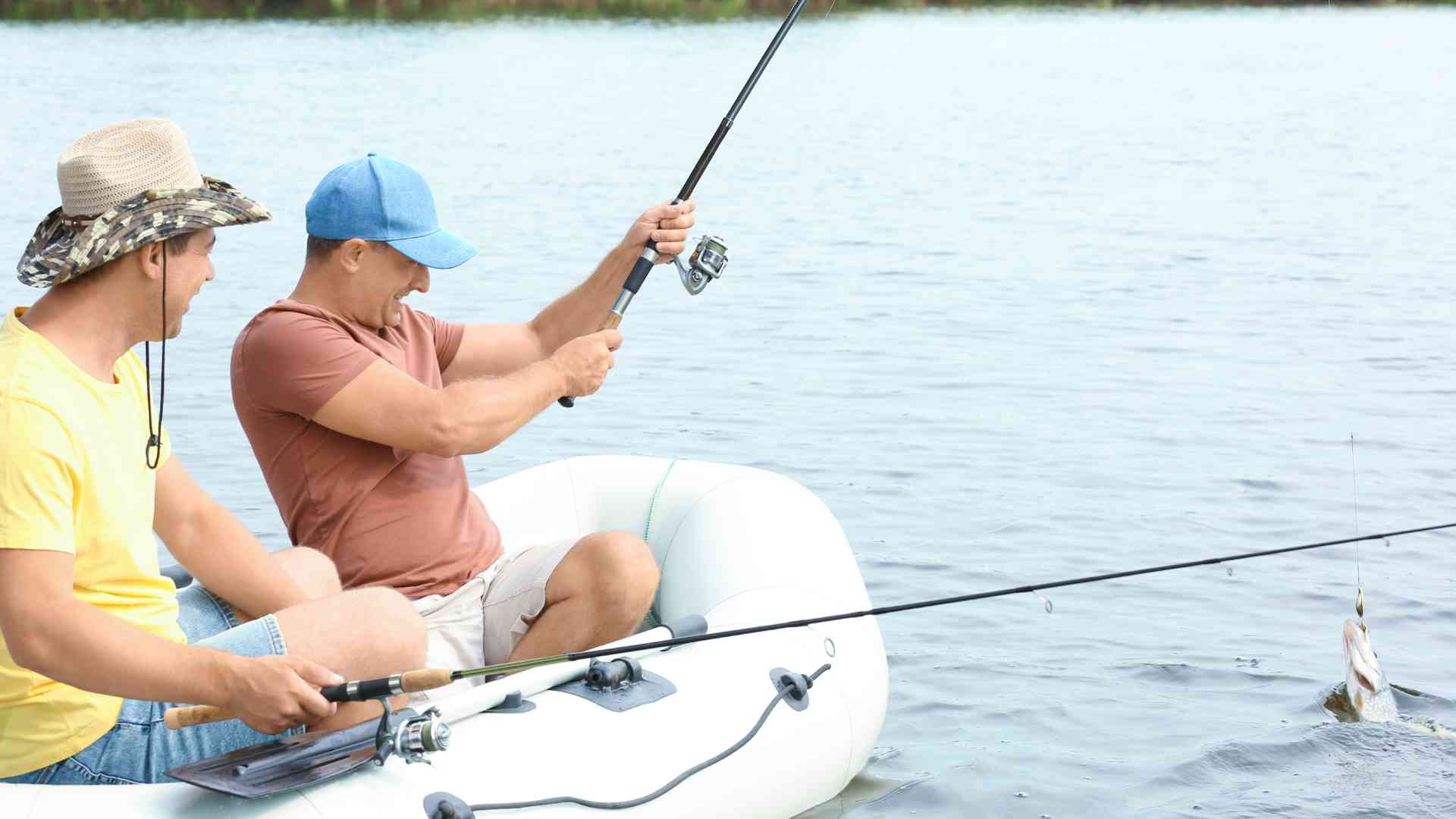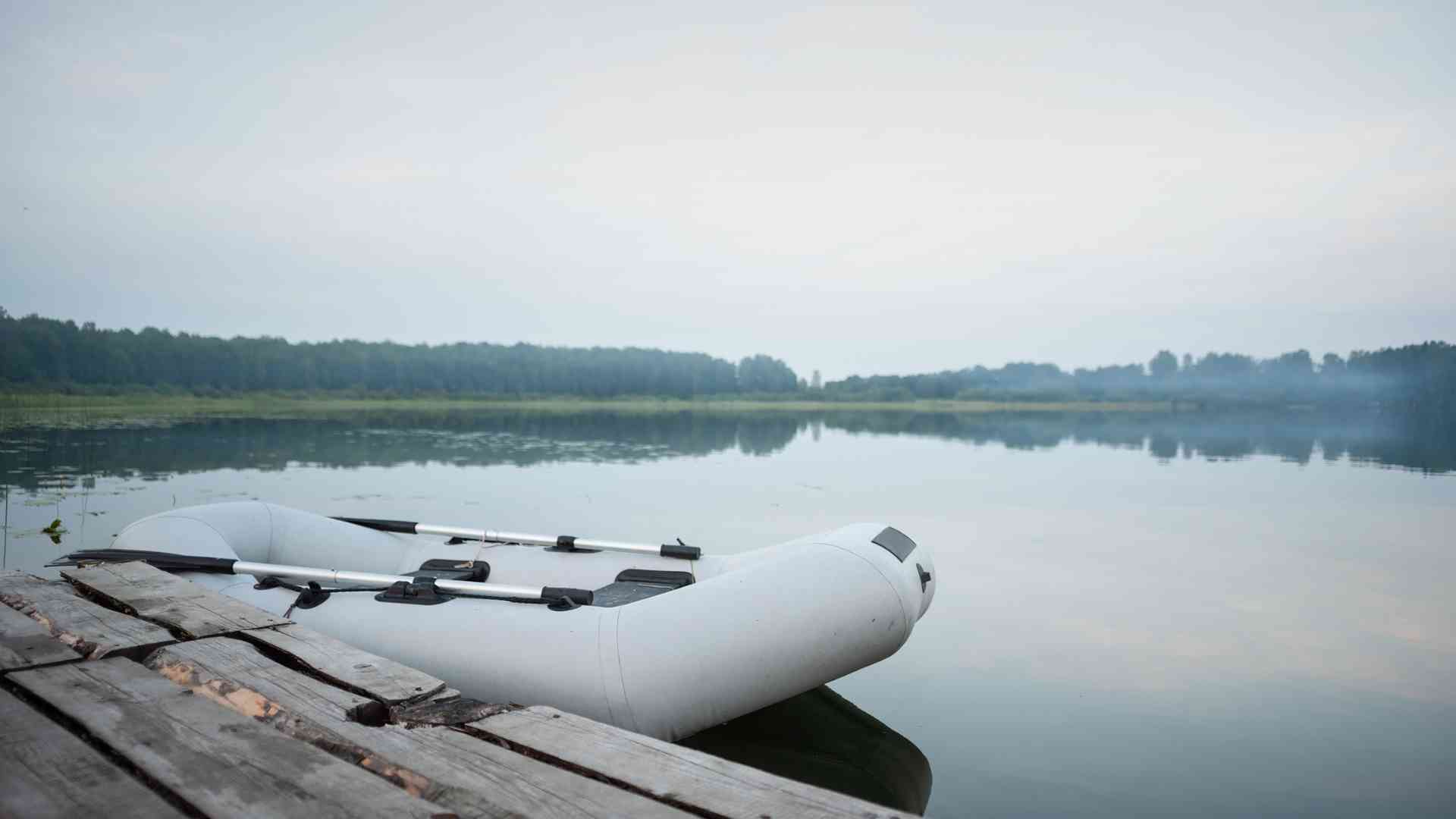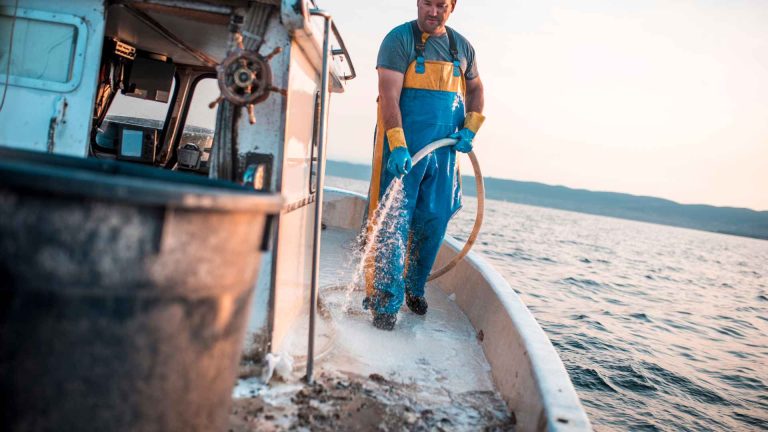Are Inflatable Boats Safe for Fishing? In-Depth Guide
Imagine gliding across serene waters, casting your fishing line into the depths below, all from the comfort of a compact and lightweight vessel. Inflatable boats have seen a surge in popularity among anglers due to their portability, affordability, and ease of use. These versatile watercraft have opened up new possibilities for fishing enthusiasts, offering a convenient and cost-effective alternative to traditional boats.
However, with the excitement of exploring new fishing grounds on inflatable boats comes the responsibility of ensuring safety on the water. Many anglers have raised concerns about the safety of inflatable boats, considering their unique construction and characteristics.
In this comprehensive guide, we delve into the world of inflatable boats for fishing, addressing the safety considerations and providing essential tips to ensure a secure and enjoyable fishing experience. Whether you’re a seasoned angler looking for a portable fishing solution or a beginner seeking adventure on the water, this guide will equip you with the knowledge needed to make an informed decision and stay safe during your fishing escapades.
Overview of Inflatable Boat Construction and Materials Used
Inflatable boats are crafted using a unique construction method that allows them to be inflated for use and deflated for easy storage and transport. These boats typically consist of several main components, including the inflatable tubes, the floor, and various valves and fittings.
1. Inflatable Tubes:
The inflatable tubes, also known as pontoons or sponsons, are the defining feature of inflatable boats. They are made from either PVC (Polyvinyl Chloride) or Hypalon (Chlorosulfonated Polyethylene, also known as CSM) materials. Each material has its own set of characteristics.
2. PVC Material:
PVC is a popular choice for constructing inflatable boats due to its affordability and ease of maintenance. It is lightweight and resistant to UV rays, making it suitable for recreational use in calm waters. However, PVC is not as durable as Hypalon and is more susceptible to damage from sharp objects and prolonged exposure to direct sunlight.
3. Hypalon (CSM) Material:
Hypalon is a synthetic rubber material known for its exceptional durability and resistance to abrasion, chemicals, and UV rays. Boats made from Hypalon are more expensive but are preferred for commercial and heavy-duty applications where the boat will be subjected to challenging conditions and frequent use.
4. Reputable Brands and Quality:
When choosing an inflatable boat, it is crucial to opt for reputable brands that use high-quality materials and construction techniques. Well-built inflatable boats are less likely to experience air leaks or structural failures, providing a safer and more reliable boating experience.
By understanding the differences between PVC and Hypalon materials and selecting a quality inflatable boat, anglers can ensure a solid foundation for safety on the water during their fishing excursions.
Stability and Balance of Inflatable Boats During Fishing Activities
The stability and balance of inflatable boats are crucial factors that directly impact the safety and overall fishing experience. Inflatable boats are designed to offer good stability, making them suitable for various fishing activities.
1. Wider Beam and Lower Center of Gravity:
One of the key factors contributing to the stability of inflatable boats is their wider beam, which refers to the width of the boat at its widest point. The wider beam provides a broader base, enhancing the boat’s resistance to tipping over or capsizing. Additionally, inflatable boats generally have a lower center of gravity due to their design, further improving stability.
2. Proper Weight Distribution:
Maintaining proper weight distribution is essential for ensuring the stability of inflatable boats during fishing. Distributing the weight evenly across the boat prevents it from leaning excessively to one side, which could lead to instability. Anglers should be mindful of where they place their gear, tackle boxes, and themselves to achieve optimal weight distribution.
3. Careful Movement:
When fishing from an inflatable boat, anglers should practice careful and deliberate movements. Avoid sudden shifts in weight or abrupt movements that can upset the boat’s balance. Staying centered and balanced while casting or reeling in fish helps maintain stability and minimizes the risk of accidents.
By understanding the design features that contribute to inflatable boats’ stability and balance, and by adopting proper weight distribution and careful movement, anglers can ensure a safe and enjoyable fishing experience on their inflatable boats.
Buoyancy and Load Capacity of Inflatable Boats

1. Buoyant Design:
The buoyant design of inflatable boats is one of their key safety features. These boats are constructed with air-filled compartments, usually made of durable materials like PVC or Hypalon, which contribute to their natural buoyancy. Even if an inflatable boat takes on water, its buoyancy allows it to stay afloat, providing an added layer of safety compared to rigid-hulled boats.
Inflatable boats are designed with multiple air chambers. In the event of damage or puncture to one chamber, the remaining chambers maintain buoyancy, preventing the entire boat from sinking. This feature ensures that even if an accident occurs, anglers have a higher chance of staying safe on the water.
2. Maximum Load Capacity:
Every inflatable boat comes with a specified maximum load capacity, indicating the total weight it can safely carry, including passengers, fishing gear, and other equipment. Adhering to the boat’s maximum load capacity is crucial for ensuring safe operation during fishing trips.
Exceeding the maximum load capacity can compromise the boat’s stability, buoyancy, and maneuverability. An overloaded boat may become unstable, making it prone to capsizing or swamping. This could lead to dangerous situations for passengers and crew, especially during adverse weather conditions.
Before embarking on a fishing trip, anglers should calculate the combined weight of passengers and gear to ensure it falls within the boat’s specified load capacity. Distributing the weight evenly across the boat is also essential for maintaining stability and optimal performance.
By understanding the buoyant design and load capacity of inflatable boats, anglers can confidently enjoy their fishing trips while prioritizing safety on the water. It is essential to follow the manufacturer’s guidelines and recommendations to make the most of the boat’s safety features.
Handling and Performance of Inflatable Boats in Various Water Conditions
1. Responsiveness and Maneuverability:
Inflatable boats are known for their excellent responsiveness and maneuverability, making them well-suited for fishing in tight spaces, narrow rivers, and shallow waters. Their lightweight construction and flexible design allow anglers to navigate through challenging areas with ease. This advantage enables fishermen to access fishing spots that may be difficult to reach with larger, more rigid boats.
The inflatable nature of these boats also provides a soft and forgiving ride, reducing the impact of waves and choppy waters. This can be particularly beneficial when fishing in areas with underwater obstacles or around other watercraft.
2. Performance in Different Water Conditions:
While inflatable boats offer great handling in calm and sheltered waters, their performance may vary in more challenging conditions. In choppy waters or strong currents, inflatable boats may not provide the same level of stability as rigid-hulled boats. It is essential for anglers to exercise extra caution and be mindful of the boat’s load distribution to maintain stability and balance.
During adverse weather conditions, such as high winds or heavy waves, inflatable boats may be more susceptible to drifting and may not handle as well as heavier boats. Anglers should monitor weather forecasts and be prepared to adjust their plans or seek shelter if necessary to ensure safety on the water.
Additionally, inflatable boats with deeper V-shaped hulls tend to handle rough waters better than those with flat-bottomed hulls. When choosing an inflatable boat for fishing, considering the hull design and the expected fishing environment can influence its overall performance and safety.
By understanding the handling and performance characteristics of inflatable boats in different water conditions, anglers can make informed decisions about when and where to use their boats for fishing activities, ensuring a pleasant and safe experience on the water.
Safety Features of Inflatable Boats That Cater Specifically to Fishing Activities

Inflatable boats designed for fishing often come equipped with various safety features to enhance the overall fishing experience and provide peace of mind for anglers. These safety features are specifically tailored to cater to the unique requirements of fishing activities.
- Grab Lines: Most inflatable boats feature sturdy grab lines along the boat’s sides, providing convenient handholds for stability and ease of boarding. These lines are valuable when moving around the boat or repositioning during fishing, especially in situations where balance and stability are crucial.
- D-Rings and Attachment Points: Inflatable boats are typically equipped with multiple D-rings or attachment points strategically placed around the boat’s perimeter. Anglers can use these attachment points to secure fishing gear, accessories, and other essential items, ensuring that everything stays organized and within reach during fishing trips. This feature prevents gear from sliding or shifting during movement, which can maintain the boat’s stability and prevent accidents.
- Multiple Air Chambers: High-quality inflatable boats are designed with multiple air chambers within the hull. If one chamber is punctured or damaged, the other chambers remain inflated, providing an added level of safety. Having multiple air chambers ensures that the boat remains buoyant even if one compartment is compromised, allowing anglers to return safely to shore in such situations.
- Non-Slip Flooring: Fishing can involve exposure to water and fish slime, which can make boat surfaces slippery. Many inflatable boats for fishing are equipped with non-slip flooring or deck padding to enhance traction and prevent accidental slips and falls, further promoting safety during fishing activities.
- Safety Valves: Inflatable boats are equipped with one-way safety valves that allow easy inflation and secure air retention. These valves prevent air leakage, ensuring that the boat remains fully inflated during fishing trips.
Investing in an inflatable boat with these safety features enhances the fishing experience and provides added security on the water. Prioritizing safety features when choosing an inflatable boat can significantly contribute to a safe and enjoyable fishing adventure.
Significance of Regular Maintenance and Proper Storage to Ensure Inflatable Boat Safety
Regular maintenance and proper storage are essential for ensuring the safety and longevity of inflatable boats. By following these guidelines, anglers can keep their inflatable boats in top condition for safe and enjoyable fishing experiences:
- Routine Inspections: Conduct thorough inspections of the inflatable boat before and after each fishing trip. Check for any signs of wear, damage, or punctures. Pay special attention to seams, valves, and attachment points for fishing gear.
- Cleaning: After each use, clean the boat with mild soap and water to remove any debris, saltwater, or fish remnants. Avoid using abrasive cleaners or brushes that could damage the boat’s material.
- Avoiding Direct Sunlight: When not in use, store the inflatable boat in a cool, dry, and shaded area. Prolonged exposure to direct sunlight can degrade the boat’s material over time.
- Proper Inflation: Inflate the boat to the manufacturer’s recommended pressure. Overinflation or underinflation can affect the boat’s stability and performance.
- Patching Minor Punctures: In the event of a minor puncture or tear, use a patch kit specifically designed for the boat’s material (PVC or Hypalon). Follow the patch kit instructions carefully to ensure an effective repair.
- Addressing Major Repairs: For significant damage or complex repairs, it is best to seek professional repair services. Professional repair technicians have the expertise and tools to handle more extensive repairs and ensure the boat’s structural integrity.
- Inspect Safety Features: Regularly check the condition of grab lines, D-rings, attachment points, and safety valves. Ensure they are secure and functioning correctly to maintain the boat’s safety features.
- Store Properly: When not in use for extended periods, deflate the boat and store it in a protective bag or container. This helps prevent unnecessary wear and tear and protects the boat from environmental elements.
By incorporating these maintenance practices into their routine, anglers can prolong the life of their inflatable boats and ensure they remain safe and reliable for many fishing adventures to come. Keeping the boat in good condition not only enhances safety but also enhances the overall fishing experience by providing a stable and dependable watercraft for enjoyable angling pursuits.
Necessary Safety Equipment and Precautions for Fishing in Inflatable Boats

When fishing in inflatable boats, safety should always be a top priority. The following safety equipment and precautions are essential for a safe and enjoyable fishing experience:
- Personal Flotation Devices (PFDs): Always wear properly fitted and approved PFDs while on board. PFDs provide buoyancy and can be life-saving in case of an accident or unexpected capsize.
- Marine Whistle: Carry a marine whistle or other sound-signaling device to alert nearby vessels or individuals in case of an emergency.
- Navigation Lights: If fishing during low-light conditions or at night, ensure the inflatable boat is equipped with proper navigation lights to enhance visibility and avoid collisions with other watercraft.
- Emergency Communication: Have a reliable means of communication on board, such as a fully charged cell phone in a waterproof case or a marine VHF radio, to contact emergency services if needed.
- Safety Kit: Prepare a safety kit that includes items like a first-aid kit, a basic toolset, and a flashlight with spare batteries. Additionally, carry a knife or cutting tool that could be useful in emergency situations.
- Weather Check: Before heading out, check weather forecasts and water conditions for the day. Avoid fishing during severe weather, high winds, or stormy conditions that can make boating hazardous.
- Anchor and Tether: Carry a suitable anchor and tether to stabilize the inflatable boat when fishing in stationary positions. This prevents drifting and ensures stability while casting or reeling in fish.
- Weight Distribution: Pay attention to weight distribution in the boat to maintain proper stability. Avoid overloading one side and keep the boat balanced for safer handling.
- Buddy System: Whenever possible, go fishing with a buddy. Having another person on board can be beneficial in case of emergencies or assistance needed.
- Familiarize with Boat Features: Before heading out, familiarize yourself with the inflatable boat’s features, including inflation and deflation procedures, valve operations, and safety features.
By adhering to these safety precautions and carrying the necessary equipment, anglers can minimize risks and ensure a safe fishing experience in their inflatable boats. Staying prepared, being cautious, and prioritizing safety measures enhance the enjoyment of fishing while providing peace of mind on the water.
Watch Are inflatable boats safe? Yes!! | Video
Top 5 FAQs and answers related to Are inflatable boats safe for fishing
Are inflatable boats safe for fishing in rough waters?
Can inflatable boats handle the weight of fishing gear and catch?
How do I repair small punctures or tears in my inflatable fishing boat?
Are inflatable boats safe from capsizing?
Can inflatable boats be used for fishing in open water or coastal areas?
Conclusion

In conclusion, this comprehensive guide has shed light on using inflatable boats for fishing. We explored the strengths of both PVC and Hypalon inflatable boats, emphasizing their durability and versatility. The wide beam and lower center of gravity of inflatable boats contribute to stability, and their buoyant design ensures they stay afloat even with water inside.
Understanding the importance of proper maintenance, repairs, and adherence to weight limits is vital for ensuring safety on the water. The guide highlighted essential safety features, precautions, and equipment necessary for a secure fishing experience.
While inflatable boats can be safe for fishing when used appropriately, it’s essential to consider individual fishing needs, water conditions, and the quality of the boat when making a choice. With this knowledge in hand, readers can confidently enjoy many safe and enjoyable fishing experiences in their inflatable boats, creating lasting memories on the water.
Share Are Inflatable Boats Safe for Fishing? In-Depth Guide with your friends and Leave a comment below with your thoughts.
Read Canoe vs. Kayak: What Are the Differences? Complete Guide until we meet in the next article.






